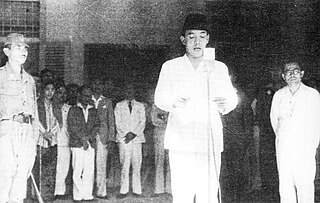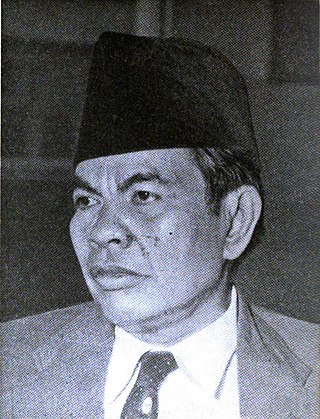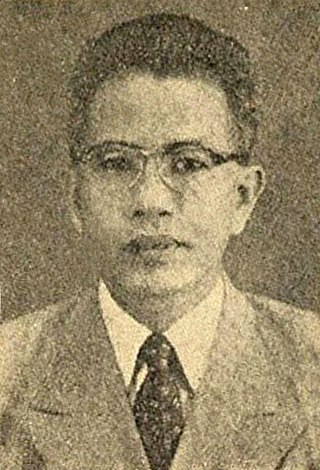Background
In 1927, the Association of Political Organisations of the Indonesian People (PPPKI) was formed to unite nationalist Indonesian organisations, but it faced oppression from the colonial authorities, and disbanded in 1934. As a result of Dutch actions against non-cooperative nationalist organisations such as the Indonesian National Party (PNI), from 1935 cooperating parties that were prepared to work with the colonial authorities by participating in the Volksraad semi-legislative body assumed a dominant role in the nationalist movement. However, these cooperating nationalists still gave very little support when the Soetardjo Petition asking for a conference to discuss Indonesian autonomy was introduced in the Volksraad in 1936, viewing it as pointless or disloyal to the demands for independence.
However, as the Second World War loomed, more Indonesian nationalists took the view that if they were to adopt a cooperative stance with the colonial administration against fascism, this might cause the Dutch to agree to a degree of autonomy for the East Indies, despite the fact that at the same time, the Dutch were placing more and more restrictions on Indonesian political activity, particularly towards the apparently pro-Japan Great Indonesia Party (Parindra). In 1938, a conference organised by the Indonesian Islamic Union Party (PSII), Parindra, the Indonesian People's Movement (Gerindo) and Paguyuban Pasundan resulted in the establishment of a body called the Mediating Body for Indonesian Political Parties (Bapeppi), but as only two of the parties were prepared to join it, it achieved nothing. Prominent nationalist Mohammad Husni Thamrin then instigated talks to set up a new umbrella organisation.
Activities
GAPI held a meeting on 4 July 1939 to discuss policy and to plan for an Indonesian People's Congress in December 1939. Over the next few months it worked out a policy platform, including support for workers' rights and cooperation with the Dutch colonial government. It also decided that if Indonesia was given a popularly-elected parliament, GAPI would urge the people to fully support the government.
On 1 October 1939, 3,000 people attended a public meeting in Batavia that GAPI had organised to launch its Indonesia berparlemen campaign. On 17 December, around 90,000 people attended public meetings organised by local GAPI committees across the East Indies.
The Indonesian People's Congress (Kongres Rakyat Indonesia, KRI) was held from 25-26 December 1939. A total of 90 groups were represented, including religious, economic and social organisations as well as political parties. Echoing the Youth Pledge eleven years beforehand, and as part of the effort to stress the need for unity, the conference adopted the Indonesian language, the red and white Indonesian flag and the song Indonesia Raya as the national anthem. It also called for the Indonesia berparlemen slogan to be realized through the semi-legislative Volksraad body becoming democratic and truly representative of the Indonesian people. This would form the basis of cooperation with the Dutch in the face of the threat from global fascism. There was no response from the Dutch to this call for greater autonomy. On the second day, it was decided that the KRI would be a permanent organization, with GAPI as its executive. It would work to improve the welfare of Indonesians, with the establishment of a parliament as the first step.
In May 1940, the Germans invaded the Netherlands. In August, GAPI pointed out that as the East Indies was fighting the war allied with democratic nations, it should be run as a democracy itself as this would encourage the population to defend the colony. In September, GAPI asked the Dutch government, then in exile in London, for a Dutch-Indonesian union and a fully-elected Volksraad. As a result of demands both from within and outside the Volksraad, on 14 September 1940, the Dutch established the Visman Commission headed by Council of the Indies member F.H. Visman to hear the views of Indonesian nationalists. In February 1941, GAPI presented its detailed proposals to the Commission, as follows:
- a directly-elected bicameral parliament within five years
- a unitary state of Indonesia
- ministers appointed by the head of state and responsible to parliament
- a Dutch-Indonesian federation
Following a visit by the Dutch foreign and colonial affairs ministers from March to June 1941, East Indies Governor-General van Starkenborgh announced that a conference would be held after the war to discuss the political future of the colony. In response, Gapi expressed disappointment over this promise.
At a second congress, from 13-14 September 1941 in Yogyakarta, a motion was passed renaming the Indonesian People's Congress to the Indonesian People's Council (Madjelis Rakyat Indonesia, MRI), headed by a 15-member leadership board with equal representation from GAPI, the MIAI Islamic federation and the PVPN civil service union. As a representative body for Indonesian nationalists, it aimed to establish a fully representative parliament. On 12 December, after the outbreak of War with Japan, GAPI and the MRI executive released a statement calling for the Indonesian population to cooperate with and obey the government to defend peace and maintain order. The government responded to the GAP and MRI for the first time, and finally agreed to hold discussions. However, in protest at not being consulted in advance about the GAPI/MRI statement, the PSII withdrew from both GAPI and the MRI. On 15 January 1942, the government and MRI held a historic meeting, but by then, the Japanese invasion of the Dutch East Indies had begun. Following the surrender of the Dutch, on 20 March the Japanese occupation authorities banned all political activity.














